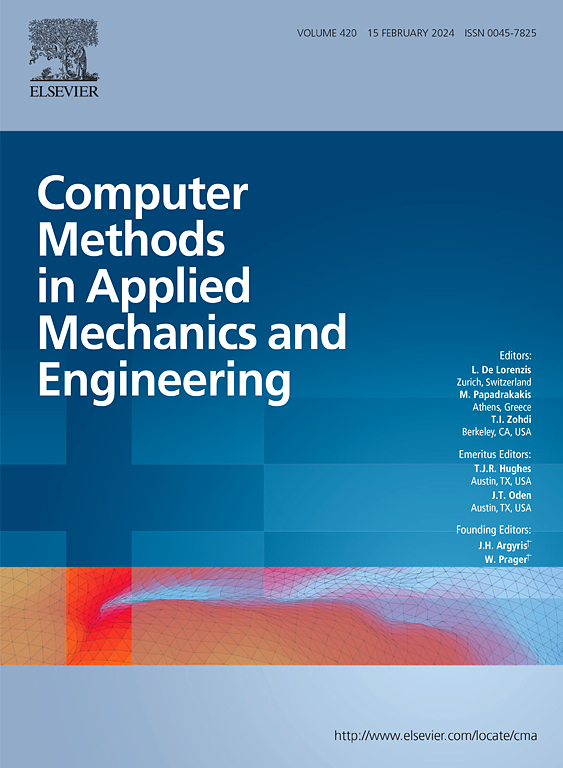一种新的基于sph的纤维定向方法和患者特异性血管流体-结构相互作用的详细模拟
IF 7.3
1区 工程技术
Q1 ENGINEERING, MULTIDISCIPLINARY
Computer Methods in Applied Mechanics and Engineering
Pub Date : 2025-07-11
DOI:10.1016/j.cma.2025.118196
引用次数: 0
摘要
在针对患者的血管流体-结构相互作用模拟中,纳入关键的生物力学因素,如纤维结构、生理初始条件和边界条件,对于提高结果的保真度和可靠性至关重要。然而,由于缺乏有效的建模方法,将这些因素结合起来仍然具有挑战性。本文提出了一种基于光滑粒子流体力学(SPH)的新型纤维取向建模方法。该方法基于基于拉普拉斯-狄利克雷规则的方法(LDRBM),利用粒子“颜色”和SPH插值来增强鲁棒性和通用性。通过这种方法,纤维效应以及预应力和组织支撑首次集成到基于sph的模拟中。通过模拟直血管中的脉动流,验证了所提出的方法,并进一步应用于脑动脉瘤和主动脉夹层的患者特异性病例。结果表明,与传统的LDRBM相比,该方法在复杂血管中产生更合理的纤维取向。此外,结合生物力学因素,如预应力和组织支持,显著提高了预测血管力学行为的生理保真度,证明了所提出方法的有效性,并强调了血管FSI详细模拟的重要性。本文章由计算机程序翻译,如有差异,请以英文原文为准。
A novel SPH-based method for fiber orientation and detailed simulation of patient-specific vascular fluid–structure interactions
In patient-specific simulation of vascular fluid–structure interaction, the incorporation of key biomechanical factors, such as fiber structures, physiological initial and boundary conditions, is crucial for enhancing the fidelity and reliability of the results. However, incorporating these factors remains challenging due to the lack of effective modeling methods. This study proposes a novel smoothed particle hydrodynamics (SPH)-based method for modeling fiber orientation. The proposed method, based on the Laplace-Dirichlet rule-based method (LDRBM), leverages particle ‘color’ and SPH interpolation to enhance robustness and versatility. With this method, the fiber effects alongside prestress and tissue support are integrated into SPH-based simulations for the first time. The proposed methods are validated by simulating pulsatile flow in a straight vessel and further applied to patient-specific cases of cerebral aneurysm and aortic dissection. The results demonstrate that the proposed method produces more reasonable fiber orientations in complex blood vessels when compared with the traditional LDRBM. Moreover, the incorporation of biomechanical factors such as prestress and tissue support significantly improves the physiological fidelity in predicting the mechanical behavior of vessels, demonstrating the effectiveness of the proposed method and highlighting the importance of detailed vascular FSI simulation.
求助全文
通过发布文献求助,成功后即可免费获取论文全文。
去求助
来源期刊
CiteScore
12.70
自引率
15.30%
发文量
719
审稿时长
44 days
期刊介绍:
Computer Methods in Applied Mechanics and Engineering stands as a cornerstone in the realm of computational science and engineering. With a history spanning over five decades, the journal has been a key platform for disseminating papers on advanced mathematical modeling and numerical solutions. Interdisciplinary in nature, these contributions encompass mechanics, mathematics, computer science, and various scientific disciplines. The journal welcomes a broad range of computational methods addressing the simulation, analysis, and design of complex physical problems, making it a vital resource for researchers in the field.

 求助内容:
求助内容: 应助结果提醒方式:
应助结果提醒方式:


